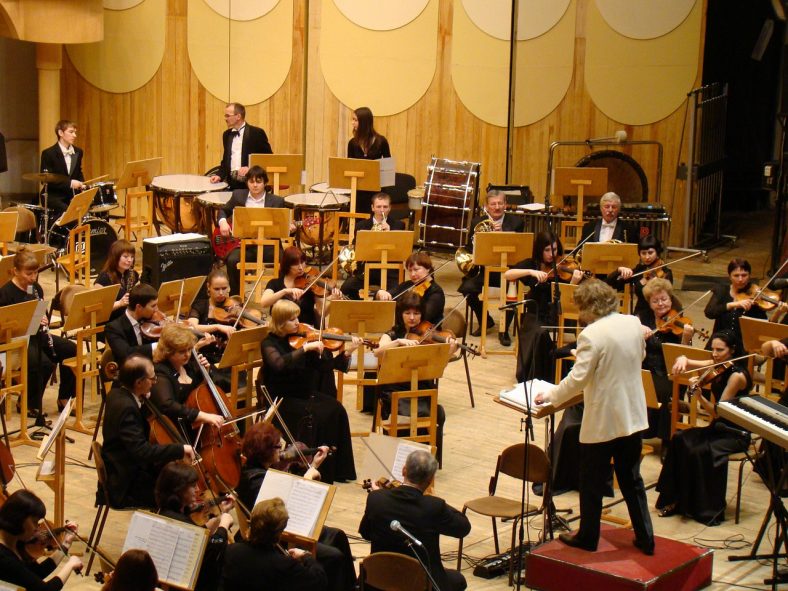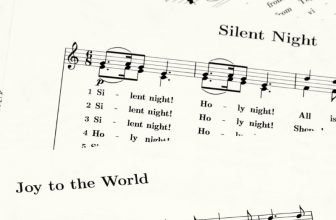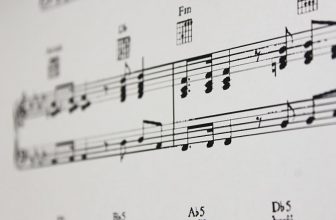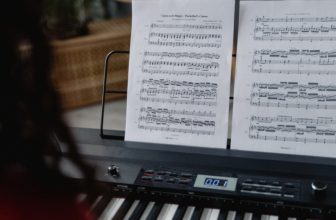What are Dynamics in Music?

Dynamics refers to how quietly or loudly a song or piece of music is played. Dynamics is the variation of loudness in either a musical composition or even a specific note.
When you are listening to a song, you will notice that certain parts are softer than others. Even the instruments played have a range and not every note or beat is uniform in terms of loudness. Also, when you look at a WAV file of a piece of music, it has many peaks and troughs, instead of being a singular block. This implies that the song has a dynamic range.
Contents
What Does Dynamics Mean When It Comes To Music?
Dynamics help convey the mood and emotion of a song or composition by altering how loudly or quietly an instrument is played. In music, dynamics are very important.
When we listen to a punk song, we often feel emotions such as anger and even excitement. This is very different than listening to ballads.
The difference in our mood and emotion when listening to these two different kinds of music is because of the dynamics of the song.
Typically verses are quieter than the chorus in a song. This helps make the latter more memorable and separates it from the rest of the track.
Importance Of Understanding Dynamics In Music
As music composers, it is important to know how dynamics work because it helps us convey the mood or emotion to the listener.
In a band, not everyone has to play every note loudly all the time. This will make the music sound like noise. We must have an understanding of dynamics to be able to paint a clear picture.
If you notice, the drummer in a band plays softer during the verses to let the vocals and guitars cut through. They will play a lot louder, along with the bass player in a chorus. The dynamics of individual instruments greatly affect how a song is heard by the listener.
Even for the different genres of electronic music, not having rises and falls in the track will make it monotonous. Hence, a knowledge of dynamics is needed to be able to write, compose and perform good music.
Types Of Dynamics In Music:
No matter what instrument you play or what genre of music you are into, there are some major types of dynamics in music. The most important ones are Piano (p), Mezzo Piano (mp), Mezzo Forte (mf) and Forte (f).
You may have noticed that the dynamics are represented by certain symbols. The two basic dynamic symbols are
- ‘p’: This represents piano and means “quiet”.
- ‘f’: This represents forte and means “loud” or “strong”.
So let us take a look at some of the dynamic markings and what they stand for:
- Piano (p): quiet.
- Mezzo Piano (mp): moderatley quiet.
- Mezzo Forte (mf): moderately loud.
- Forte (f): loud/strong.
- Pianississimo (ppp): very, very quiet.
- Pianissimo (pp): very quiet.
- Più Piano (più p): more quiet.
- Fortissimo (ff): very loud.
- Fortississimo (fff): very, very loud.
- Più Forte (più f): more loud.
If you look at the sheet music for any piece of classical music, you will notice these markings along with the notes and other information. This helps individuals play the composition accurately. Without these markings, there would be no way to determine if a note needs to be played softly or loudly.
When you are writing music for other musicians to play, it is a good habit to include the dynamic composition of the song. This will help others understand your music better.
Changes In Dynamics
Just like individual notes, there are also changes in dynamics in the overall musical composition. These are:
- Crescendo: This means “increasing” or “growing”. If you notice the background scores of horror movies, the intensity gradually increases to build up to a state of tension. This is an example of using a “crescendo” in musical composition.
- Decrescendo: This means “decreasing”. A decrescendo is the opposite of a crescendo and generally refers to a steeper movement in volume.
- Diminuendo: This means “diminishing”. A way that many modern pop songs use diminuendo is by the fade-out at the end of the song. The volume gradually decreases to zero.
One of the best ways to understand the changes in dynamics is by listening to ‘Bohemian Rhapsody’ by Queen. This composition covers a very broad dynamic range. A good practice would be to identify the types of music from the above list while listening to this:
History Of Dynamics
While the dynamics in music are very easy to feel, it often helps to know how to describe something when you know exactly how to convey that information to someone else.
Dynamics, as we know them today, have their origins in ancient Greek musicals. This has been suggested by Plutarch in the work ‘On Music’ as part of ‘Moralia’.
Although composer Giovanni Gabrielli was one of the first to indicate dynamics in compositions during the Renaissance, it was sparingly used even till the late 18th century. The exception of the period was J.S. Bach, who used certain terms such as forte, piano, più piano, etc.
It was during the Romantic period that composers added new terms to their vocabulary to describe changes in dynamics. Franz Joseph Haydn and Mozart specified six levels (pp to ff) and Beethoven also used ppp and fff for his compositions.
The più p and più f were added during a later part of the period and thus we have the ten levels of dynamics as we know them today.
Summary
Apart from evoking an emotion or conveying mood, dynamics is what sets a composition apart from another.
Today, owing to the advancements in technology, there are modern ways to convey the dynamic range of a piece of music. We use Dynamic Range Compression to adjust the range of a recording or even a singular instrument. This affects the sound at both a micro and a macro level.
Dynamics also includes changes in timbre and tempo. We often notice changes in scale or slowing down and speeding up in a song. This is all a part of the dynamics.





